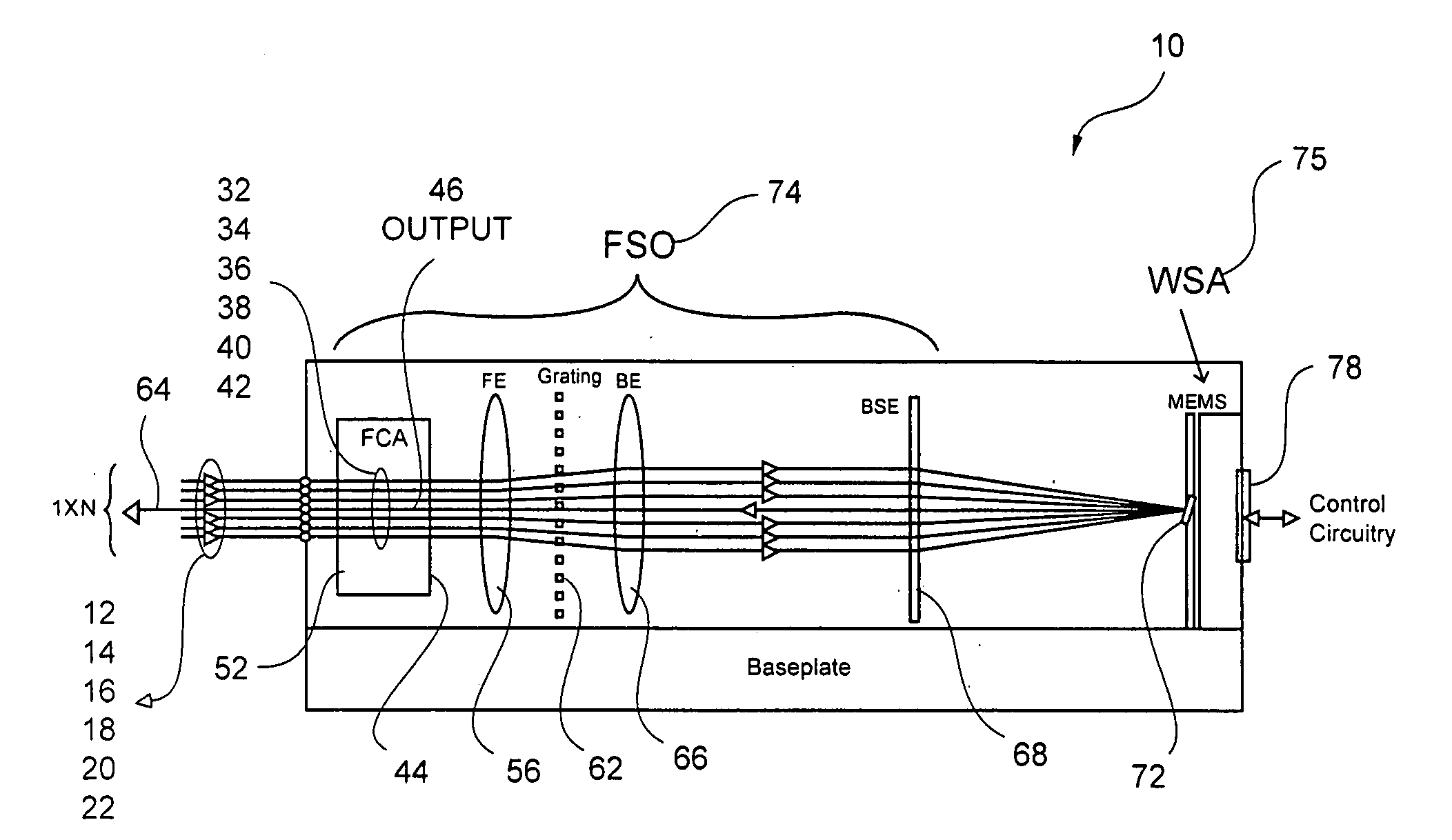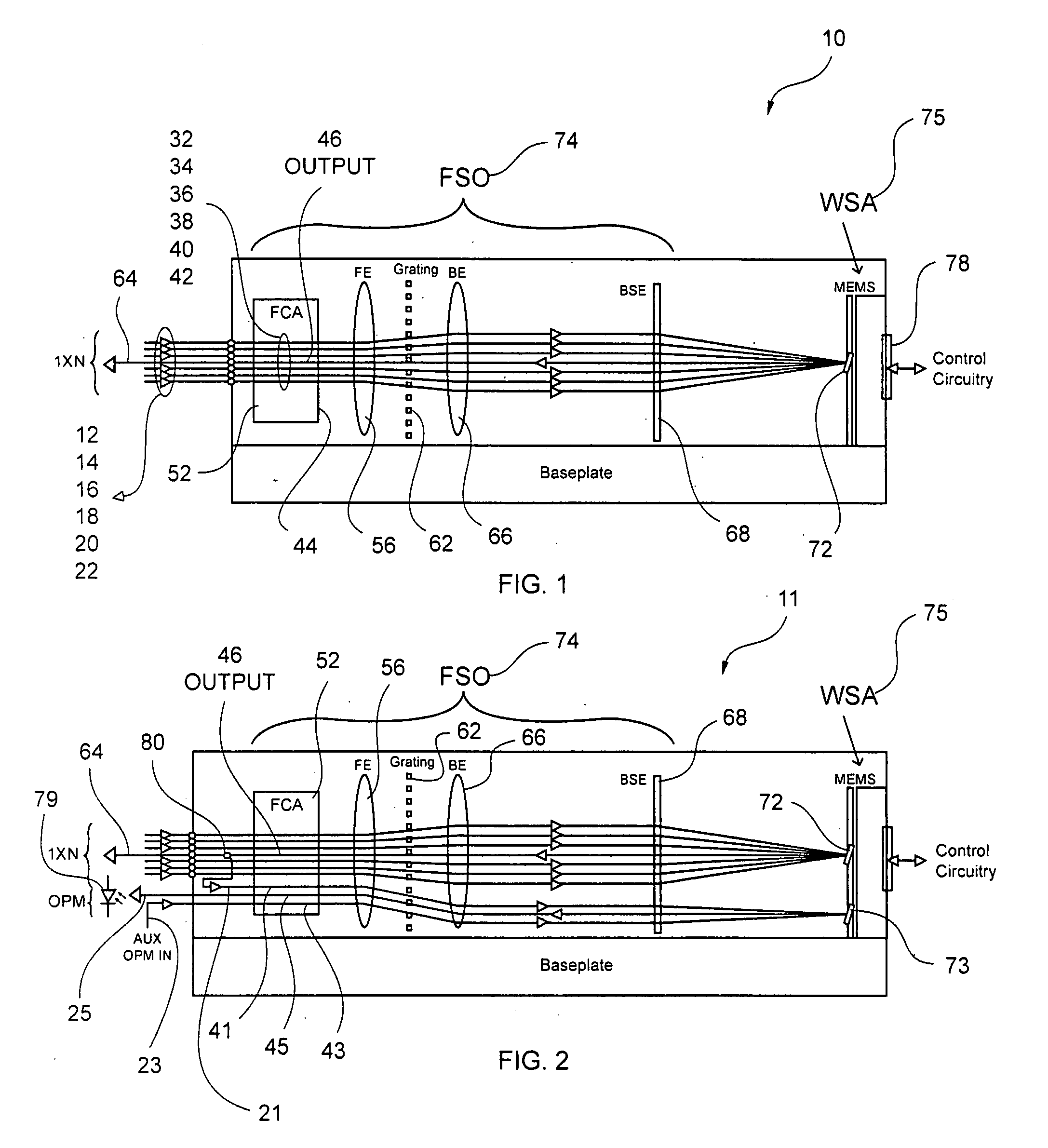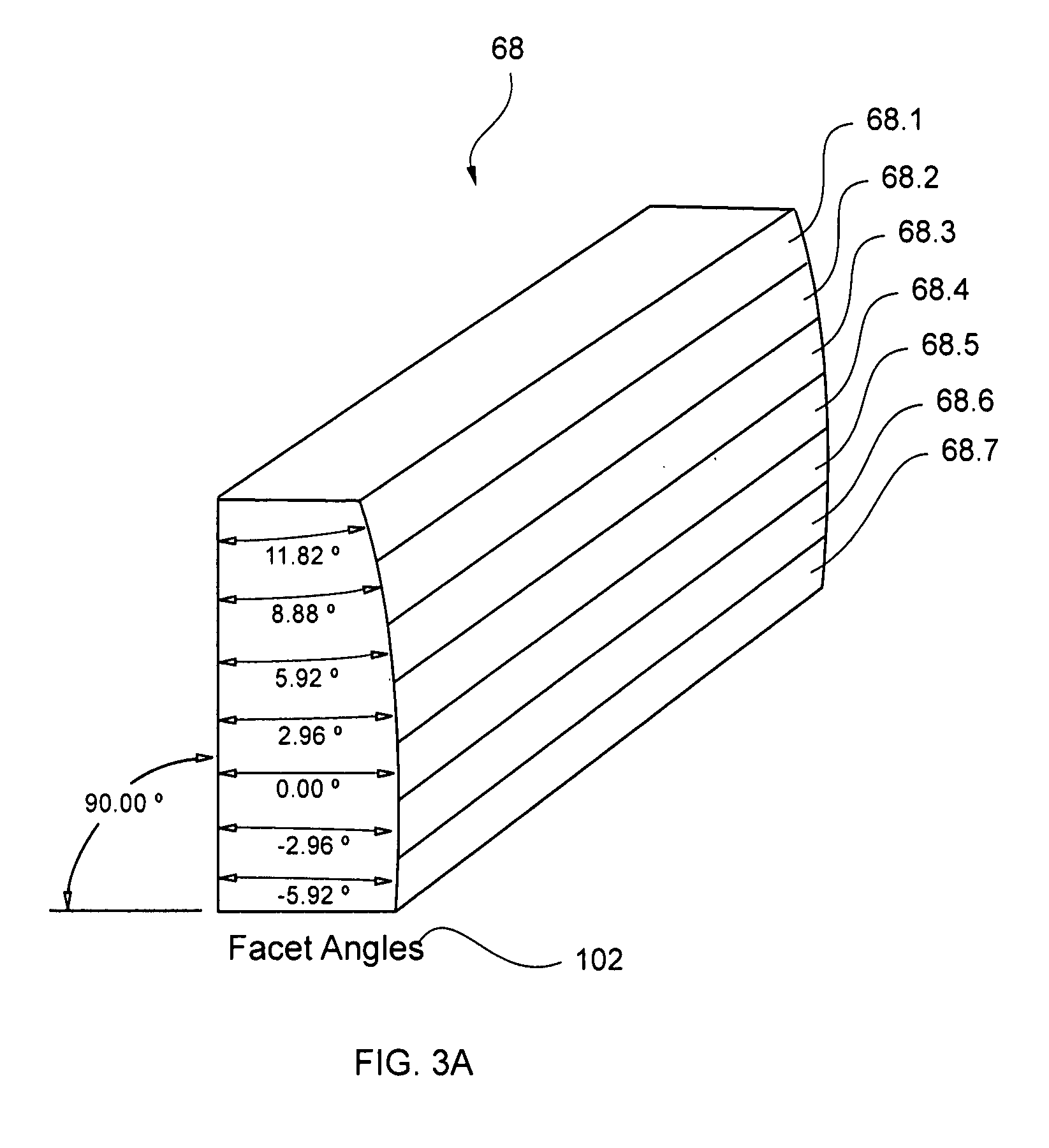Beam steering element and associated methods for manifold fiberoptic switches
a fiber optic switch and beam steering technology, applied in the field of alloptical fiber optic communications and datacom switches, can solve the problems of wdm signal degradation and oeo regeneration, optical signal risk becoming excessively distorted, and compounding the cost of oeo regeneration. , to achieve the effect of simple movement and rotation
- Summary
- Abstract
- Description
- Claims
- Application Information
AI Technical Summary
Benefits of technology
Problems solved by technology
Method used
Image
Examples
Embodiment Construction
[0078]In describing the preferred and selected alternate embodiments of the present version of the invention, as illustrated in FIGS. 1-23, specific terminology is employed for the sake of clarity. The invention, however, is not intended to be limited to the specific terminology so selected, and it is to be understood that each specific element includes all technical equivalents that operate in a similar manner to accomplish similar functions.
[0079]Referring now to FIG. 1, there is illustrated a schematic illustration of a six input fiber port by one output fiber port wavelength selective switch 10. However, it is emphasized that this 6×1 embodiment is illustrated only for simplicity, and that by increasing the number of input fiber ports by N, then an N×1 switch 10 is contemplated herein, wherein N represents the number of input fiber ports. Preferably, wavelength selective switch 10 can be operated in either direction, wherein N of N×1 represents N input fiber ports and one output...
PUM
 Login to View More
Login to View More Abstract
Description
Claims
Application Information
 Login to View More
Login to View More - R&D
- Intellectual Property
- Life Sciences
- Materials
- Tech Scout
- Unparalleled Data Quality
- Higher Quality Content
- 60% Fewer Hallucinations
Browse by: Latest US Patents, China's latest patents, Technical Efficacy Thesaurus, Application Domain, Technology Topic, Popular Technical Reports.
© 2025 PatSnap. All rights reserved.Legal|Privacy policy|Modern Slavery Act Transparency Statement|Sitemap|About US| Contact US: help@patsnap.com



